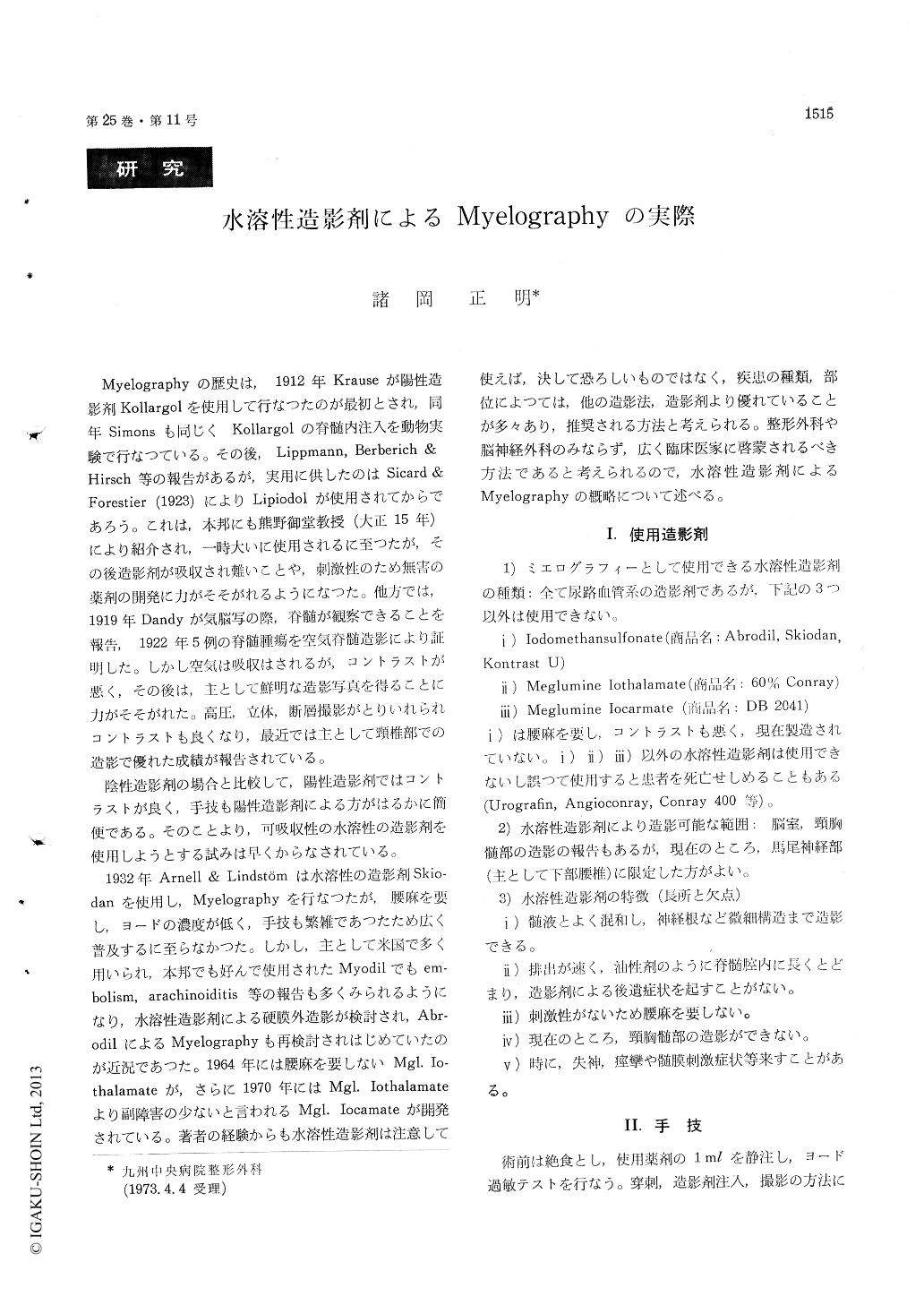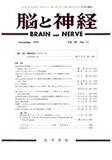Japanese
English
- 有料閲覧
- Abstract 文献概要
- 1ページ目 Look Inside
Myelographyの歴史は,1912年Krauseが陽性造影剤Kollargolを使用して行なつたのが最初とされ,同年Simonsも同じくKollargo1の脊髄内注入を動物実験で行なつている。その後,Lippmann,Berberich & Hirsch等の報告があるが,実用に供したのはSicard & Forestier (1923)によりLipiodolが使用されてからであろう。これは,本邦にも熊野御堂教授(大正15年)により紹介され,一時大いに使用されるに至つたが,その後造影剤が吸収され難いことや,刺激性のため無害の薬剤の開発に力がそそがれるようになつた。他方では,1919年Dandyが気脳写の際,脊髄が観察できることを報告,1922年5例の脊髄腫瘍を空気脊髄造影により証明した。しかし空気は吸収はされるが,コントラストが悪く,その後は,主として鮮明な造影写真を得ることに力がそそがれた。高圧,立体,断層撮影がとりいれられコントラストも良くなり,最近では主として頸椎部での造影で優れた成績が報告されている。
陰性造影剤の場合と比較して,陽性造影剤ではコントラストが良く,手技も陽性造影剤による方がはるかに簡便である。そのことより,可吸収性の水溶性の造影剤を使用しようとする試みは早くからなされている。
In view of many reports referring to complica-tions due to oily contrast media, it can he claimed to he a matter of course that myelography with water-soluble contrast media have conic to he in-creasingly attended to.
Arnell and Lindstroem reported in 1932 their experience with myelography using Abrodil, a water soluble contrast medium. This medium, however, has not been popularized because it could not be applied to lumbar anesthesia.
In 1964, Campbell et al. reported their experience with a new contrast medium which dispensed with lumbar anesthesia. Since this medium had better contrast and less complications and yet required no lumbar anesthesia with no complication method than the methods used up until then, it has be-come dmployed by a number of clinicians.
We have carried out comparative evaluation of myelographic evaluations with Abrodil, Megl. Iothalamate, and Megl. iocarmate.
The following summarizes on the basis of our experiences method, advices, and treatments against complicatications during contrast-radiography, all of which are deemed to be the best possible of all the contrast radiographic means with water-soluble contrast media examined.
1) Abrodil should be applied under spinal an-esthesia, while Megl. Iothalamate and Megl. io-carmate should be used under no spinal anesthesia.
2) The three contrast media should mainly be applied to lumbar region (according to bibliography, they are used for ventriculography with iothala-mate and for treatments of cervico-thoracic region).
3) The static kinesiradiography using iocarmate and iothalamate was found to be of a high diag-nostic value in clinical practice.
4) The side effects exprienced were divided into those attributable to lumbar puncture and those attributable to the media used ; syncope and shock symptoms were attributable to the former, while spasm was attributable to the latter. However, no spasm was experienced with iocarmate,
5) The medium infusion was prohibited for several minutes after insertion of the needle as the treatments against lumber shock among other side effects and, if a shock symptom has taken place, regular treatments against usual shocks should be taken. Against spasm, intravenous injection of 10 mg of Diazepam was found to be a treatment of choice.

Copyright © 1973, Igaku-Shoin Ltd. All rights reserved.


